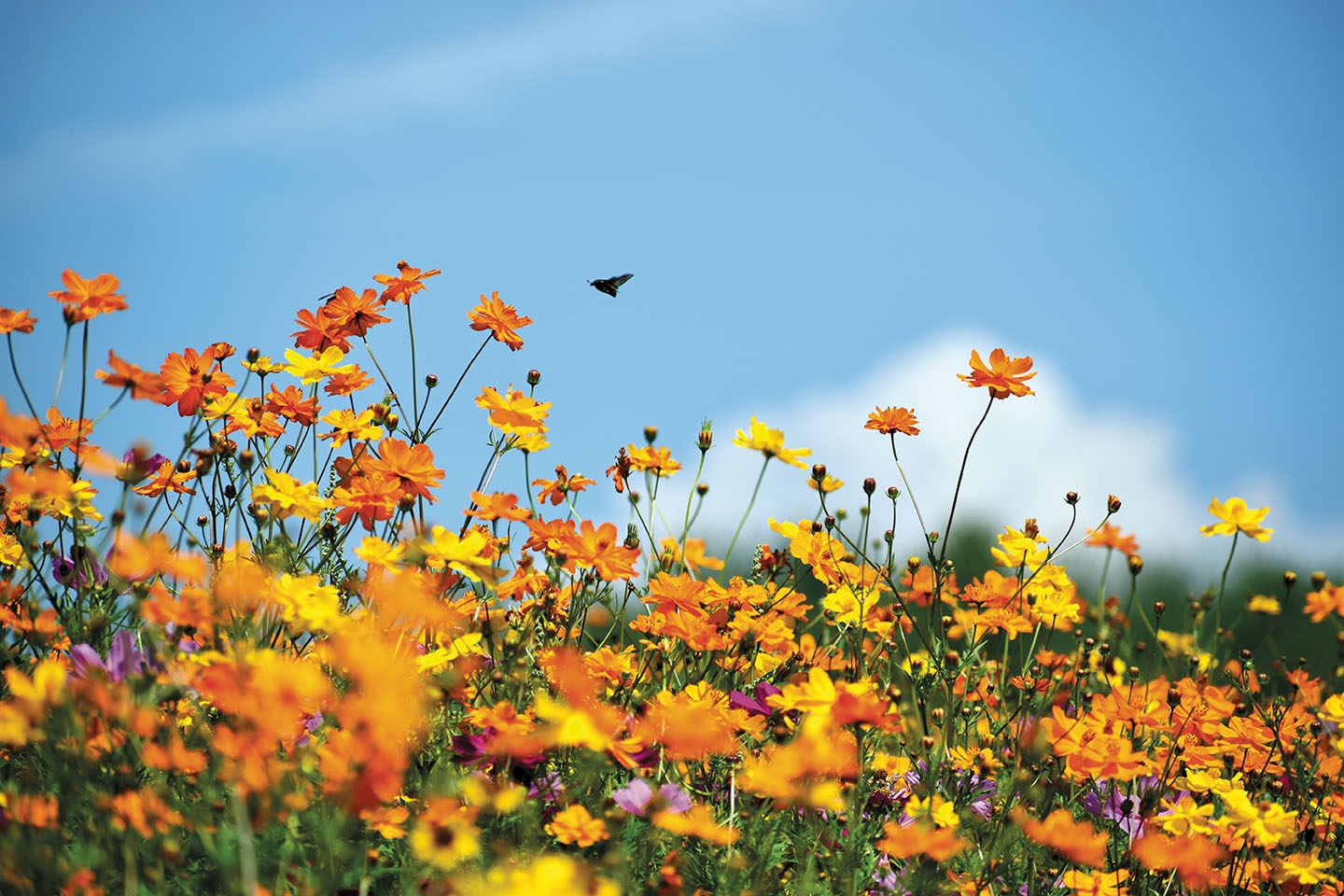The Forgotten Pollinators
When most people talk about bees,” says Bonnie Zand, a board member of the Native Bee Society of British Columbia, “they are referring to one llifera] And, while honeybees are very important, before their arrival, all our natural ecosystems were pollinated by insects that were already here,” she says.
The first swarms of honeybees were imported by ship to Victoria from California in 1858. In 1865, they were transported to Crescent Beach and over the next 20 years, the bees moved up the Fraser Valley. Before then, there were other pollinators. Navigating through the labyrinth of grasses, flowers and edibles growing in fields, home gardens and the forests of B.C., moths, wasps, butterflies, hoverflies, ants, beetles and even small native bees that don’t at all look like bees were, and still are, providing the food chain with pollinating services.
When pollen is transferred from the anther of a plant’s stamen to another, the plant becomes fertilized. While it’s true that some plants can complete this task on their own and are referred to as self-pollinators, including garden tomatoes, most require a helping hand. Between 75 and 95 per cent of all flowering plants on earth need help with pollination, including the majority of edibles growing in the garden: herbs, collards, squashes and fruit-bearing bushes and trees.
Bees, according to Zand, are the most effective pollinators because they feed their larva entirely on the pollen they collect. “Other types of pollinating insects only use the pollen and nectar to feed themselves and once the adult is full, they will stop and go do something else,” she says. But that doesn’t mean they aren’t working hard.
There’s the hoverfly trickster, for example. Part of the Syrphidae family of insects, hoverflies resemble bees or wasps and are often mistaken for them. The much-maligned snail and slug, albeit slow nocturnal workers, who stop for frequent snacks, also play a role in pollination. Pollen grains attach to their bodies as they pass or visit a plant and are dropped off when they visit another.
The Flower Longhorn beetle (family Cerambycidae, subfamily Lepturinae) is attracted by the flowers produced by carrot, parsley and celery plants. They, according to Zand, are great pollinators.
“Any animal that occasionally visits a flower may transfer some pollen,” she says. This includes ants, aphids, moths, butterflies and even bees that don’t at all look like bees. “Native bees, which do naturally occur here, are hugely diverse, and most people who see them would not recognize them as bees,” she says. Most are solitary (no queens) nest in the soil or plant stems and don’t make honey. The green metallic sweat bee, for example, is often mistaken for a common housefly. If you have gumweed (Grindelia) in the garden, you might get a pebble bee. They look like chunky black and yellow wasps and build nests out of pebbles glued together with resin.
To attract any of these pollinators to the garden, the right environment is essential.
“A garden with messy spaces provides places for insects to thrive,” Zand says.
Dead stems (hollow or pithy), untilled bare soil, dead leaves and even rock piles, all make great homes for pollinators. To help the insects survive, avoid pesticides and fertilizers in the garden. Even organic and homemade sprays can have adverse effects on hardworking pollinating insects. “Avoid plastic mulch or landscape fabric,” Zand recommends. Many insects spend part of their lives in the soil, and these plastic mulches prevent them from completing their lifecycles. Use biodegradable mulches such as leaves, grass clippings or bark mulch, she suggests.
These unassuming pollinators are, like the honeybee, also facing habitat loss. The use of synthetic fertilizers and pesticides, a changing climate and not enough understanding of their contributions to human survival are all having an impact.
“For 65 per cent of B.C.’s native pollinators, we don't have enough knowledge about them to be able to provide them with a ranking,” Zand says. Many are night stalkers and researchers at the University of British Columbia are concerned that artificial nighttime lighting in urban centres may impact an insect’s ability to forage and, by extension, gather nectar and pollinate plants. In rural areas, lighting from greenhouses could also affect the pollinator’s life cycle.
The edibles in our gardens require not just honeybees but an array of pollinators contributing to their growth. They play a role in the biodiversity of plants, from broccoli to brussels sprouts.
“If all the insect pollinators disappeared, many of these plants would soon follow,” Zand warns.
Native Bee Society of B.C.
bcnativebees.org | @bcnativebee




